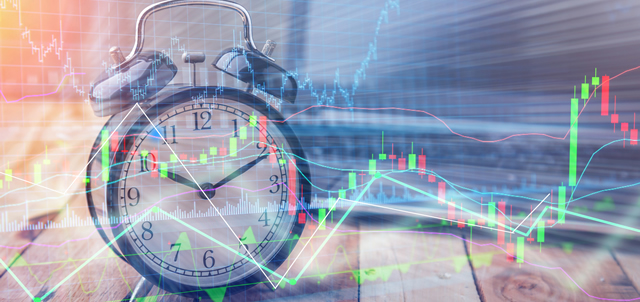Extended-Hours Trading: Know the Risks

Technology has made stock trading more accessible to retail investors in a variety of ways, including the increased availability of extended-hours trading. But while placing an order to trade outside of regular trading hours might seem simple, this market can be complex and risky.
Regular trading hours for listed stocks, as defined by the Securities and Exchange Commission (SEC), are from 9:30 a.m. to 4 p.m. ET. In the past, stock trading activity outside regular trading hours was relatively limited. Over the years, the number of exchanges has multiplied, as has the number of alternative trading systems and the trading interfaces offered by brokerage firms to retail investors, including those accessible through mobile applications. Most of these venues typically still follow the same regular trading session schedule, but changes in the marketplace have led to more widespread trading activity, including by retail investors, outside regular trading hours.
Trading activity that takes place early in the morning before regular trading begins is commonly referred to as pre-market trading. Trading that occurs later in the day after regular trading ends is known as post-market or after-hours trading. Pre-market trading is typically defined as taking place from 7 – 9:30 a.m. ET and after-hours trading from 4 – 8 p.m. ET. Trading beyond these time periods, such as during the overnight hours from 8 p.m. to 4 a.m. ET, has also more recently been made available to retail investors for certain stocks. Any activity that takes place outside of regular trading hours, whether in the pre-market, after-hours or overnight periods, is generally referred to as extended-hours trading.
Extended-hours trading can present opportunities for investors to trade when it’s more convenient for their schedules and can allow investors to react more quickly to changes in the marketplace. However, it’s important to note that the differences between extended-hours trading and regular session trading include more than just timing. Extended-hours trading comes with its own set of risks. If you’re considering engaging in extended-hours trades, here are a few factors to consider.
- Extended-hours trading is less liquid. Despite the increasing amount of extended-hours trading activity, that activity is still dwarfed by the tens of millions of transactions that typically take place during regular trading hours. If you’re seeking to buy or sell securities during extended hours, you might find comparatively fewer counterparties, making it more difficult to execute a trade. As a result, your order may be executed partially or not at all. If it's executed, it might not be at a competitive price compared to regular trading hours.
- Extended-hours trading activity is often more volatile. Because fewer trades occur during extended hours, stocks might be vulnerable to wider swings. Stocks might also be subject to more volatility during extended-hours trading because of the speed with which some investors react to key corporate events, such as earnings or other significant announcements, which normally take place during the extended-hours period.
For example, a company that reports disappointing earnings after the market closes might see a rapid decline in its share price during after-hours trading due to the market’s reaction to the announcement. However, trading might become smoother once investors have had time to review and absorb more information about the results and regular trading hours resume.
- Markets aren’t linked during extended hours. During extended hours, the price available at one trading venue might be inferior to the price available for the same security at the same time on other extended-hours trading venues. During regular trading hours, brokerage firms are generally required by SEC rules to fill customer orders for listed stocks at the best price at the time—known as the National Best Bid and Offer (NBBO). However, the NBBO is only published during regular trading hours, so this requirement doesn’t apply to extended-hours trading. As a result, you might receive an inferior price in one extended-hours trading system than you would in another system.
- Extended-hours trading doesn’t change exchanges’ official closing prices or determine the next day’s opening prices. The share prices recorded at 4 p.m. on the exchanges on a given day are considered the official closing prices for that day, regardless of what happens during extended-hours trading. These official closing prices are what investment funds use to calculate the value of their holdings at the end of regular trading hours. The next day’s opening prices are generated based on supply and demand for the securities at or around the time markets open. The pricing dynamics at market open might differ from the prior extended-hours trading session, which creates the risk that the price you receive during the extended-hours period might be worse than during the following day’s regular trading hours.
- Stock options generally don’t trade in extended hours. At present, options exchanges offer extended-hours trading in only a limited number of options contracts.
- Your brokerage firm may set specific parameters for extended-hours trading. Rules among brokerage firms about when and how customers can participate in extended-hours trading may vary. For instance, a firm might impose set times for such trading, restrict activity to a specific trading venue, or allow investors to trade only certain products. They might only accept limit orders during extended-hours trading and may have different policies regarding whether unexecuted extended-hours trades are canceled or carried over to the start of regular trading hours. They also might not offer extended-hours trading at all.
All brokerage firms, however, must advise customers of the risks of trading outside of regular trading hours, per FINRA rules. Before engaging in extended-hours trading, review the related risk disclosures provided by your brokerage firm and check for any limitations—for example, regarding available order types—placed on your choices for trading outside of regular trading hours.
Learn more about stocks and other investment products.



